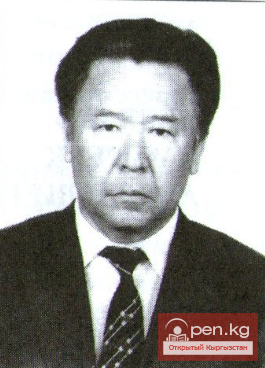
Production of Carpets
In southern Kyrgyzstan, in addition to pile carpets, they also produce pileless carpets, of the type known as "arabi kilim." Such carpets are made by the Karshi Arabs.
Carpets have firmly entered the daily life of the Kyrgyz of the Kipchak group (Batken region). They are also made in the Laylak region, and less frequently in the Frunze region. This type of carpet was historically intended for the same purposes as pile carpets: it was used during migrations and laid on the floor of the yurt. Therefore, "arabi kilim" is made in the same sizes and shapes.
The Kyrgyz of the Batken region are convinced that the carpet has the same antiquity for them as the pile carpet. However, the limited territorial distribution, the complete unfamiliarity of many Kyrgyz in the Osh region with such carpets, and the absence of other items produced using the same technique provide grounds to suggest that "arabi kilim" penetrated to the Kyrgyz from the west not long ago, possibly from the Kashka-Darya region (Uzbekistan), where its production has been noted.
These carpets are woven by Kyrgyz artisans on horizontal looms, similar to those used for producing pile carpets.
The foundation is also created, for which goat wool is mostly used. The pattern of the carpet is created using weft threads, which are usually dyed in blue, red, and green colors. Brown is also used, and black is less common.
The interweaving of threads in the carpet is plain weave. The weft threads cover the warp threads, and the latter are not visible in the carpet.
While working on the carpet, the artisan has several colored skeins of weft. With her hand, she sorts through the warp threads and passes the weft, but not across the entire width of the carpet, only up to the color boundary, where the pattern line is marked. From there, a thread of another color goes, again according to the pattern, and so on across the entire row. The weft threads are tightly beaten down (using the same beater "tokmok," which is used when making pile carpets). Similarly, according to the pattern, the weft is laid in the other direction. The fabric of the "arabi" carpet is very dense, thick, strong, but somewhat coarse.
The decoration of the carpet currently has one style, and according to the artisans, it has remained unchanged since ancient times. The character of the ornament is ancient Syrian. The central field is adorned with geometric figures in a checkerboard pattern and with stepped contours. The border pattern is executed in the same style, but it is usually made finer.
At the end of the 19th century, the Kyrgyz produced "arabi kilim" for sale.
Folk traditions in carpet weaving, related to the preparation of materials and the organization of work, are observed in the production of carpets as well.
Carpets














































